As the saying goes, if time is a long river, festivals are the docks for travelers to rest. Festivals are a precious culture created by human beings that have been around for a long time. Traditional festivals include our ancestors' cognition of nature, their perceptions of society and their understanding of human history. China is one of the oldest civilizations in the world, which has a long history and colorful culture, so it is the country with most festivals in the world, and the relevant events are also very rich. At the same time, traditional Chinese festivals also promote the accumulation and cohesion of Chinese history and culture. Some traditional festivals such as the Spring Festival (China Lunar New Year), the Lantern Festival, Tomb Sweeping Festival (Qingming Festival), the Dragon Boat Festival and the Mid-Autumn Festival are all developed from ancient times. These festivals and customs have been passed down from generation to generation, from which we can see the pictures of the ancient people's social life. They have become an important link for China's national reunification, boosted social stability and fully demonstrated the vitality, creativity and artistic ability of the Chinese nation.
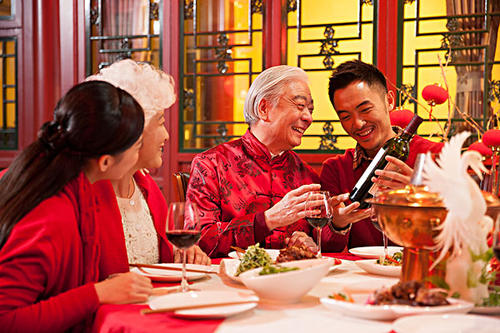
Generally, Chinese festivals are related to food. For example, the Spring Festival, the most significant festival in China, is mainly characterized by a family reunion dinner. It is worth mentioning that these festivals not only have diet culture, but also have rich cultural connotations in relevant events. In the north, for instance, people burn paper in front of the stove at the Xiao Nian Festival. Xiao Nian is also called "Little Chinese New Year," meaning the start of the Spring Festival. People imagine the rising smoke as a signal that Kitchen God to report what the family has done all year round to the Jade Emperor, the ruler of the heaven. Additionally, they also put sweet things like candy bars and apples as bribery to the Kitchen God, then he can say more nice things about their families, so that they can have good fortune in the next year.
Just as westerners must have turkeys on Thanksgiving Day, some foods have been endowed with special meanings. These foods have become the representatives of a particular festival, bearing our history and many good wishes. Here are some interesting introductions of some typical foods of traditional Chinese festivals.
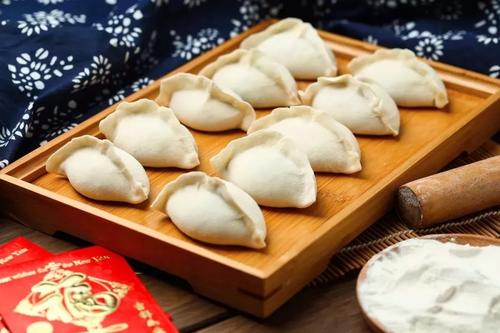
"Lunar New Year's Eve", which is connected with the Spring Festival end to end, is the Spring Festival's Eve, and it is an important time junction out with the old, in with the new. The Chinese people attach great importance to this day. They clean their houses, and decorate their houses with lanterns and colored hangings to welcome the new year with a fresh face. On Lunar New Year's Eve, people prepare for the New Year and have a New Year's Eve dinner. Family is the cornerstone of Chinese society, and the annual reunion dinner fully demonstrates the mutual respect and love among Chinese family members, which makes their relationship closer. Having a reunion dinner is the happiest thing of the year for Chinese people. It has a lot to pay attention to, which is different in the north and south of China. In the north of China, people are used to eating dumplings during the Spring Festival.

There are many legends about dumplings. For some people, dumplings are in memory of Pangu who created the world and put an end to chaos. In China, there is also a legend that dumplings come from the goddess Nuwa who created human beings. In order to fix the human ears, she pierced a small hole in the ears and fixed them with a thin thread, and the other end of the thread was put in the human mouth. In order to commemorate Nuwa, people invented dumplings, which were made into the shape of ears and eaten by mouth. In China, the custom of eating dumplings during Spring Festival was quite popular in Ming and Qing Dynasties. They are usually prepared before 12 o'clock on the evening of the New Year's Eve and eaten at midnight, which means "happy reunion" and "good luck". Now, dumplings have become an indispensable festival food for Spring Festival. The reasons are as follows: firstly, they look like gold ingots which are a form of currency in ancient China. People eat dumplings in the Spring Festival to want to be rich; secondly, people wrap all kinds of auspicious things in the fillings for dumplings, and all the things are people's hopes for the new year. Therefore, dumplings not only bring joy to people, but also become an important part of Chinese food culture.
The Spring Festival is the very day of the Lunar New Year. It's the beginning of a year. In modern times, the Spring Festival is from the 1st to 15th of the Lunar New Year. It is an important festival for Chinese people to strengthen their unity, and it is also a traditional festival with joy and peace. During the Spring Festival, families and friends can gather together. It is the earliest of all Chinese festivals of the year and it is the grandest traditional festival of the Chinese nation. The Spring Festival not only embodies the ideological belief, daily life, entertainment and cultural psychology of the Chinese nation, but also displays Chinese blessing, food and entertainment activities.
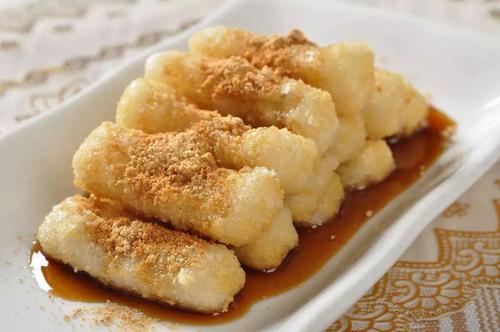
Rice cakes are a kind of traditional food of the Chinese nation, and it is also a seasonal food for the Spring Festival. They are steamed with sticky glutinous rice or rice flour. During the Spring Festival, they are popular in many areas of China. Rice cakes are red, yellow and white, symbolizing gold and silver. In Chinese, the pronunciation of rice cakes (年糕) is the same as “year” and “tall”, rice cakes mean that children will be taller than last year. And sweet and sticky rice symbolizes the sweet life in the new year. Eating rice cakes during the Spring Festival means everything will go as you expectations in the new year.
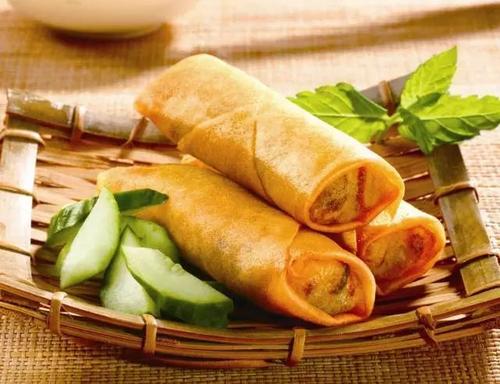
It is a traditional custom in China to eat spring rolls during the Spring Festival, just like eating glutinous rice dumplings (zongzi) in the course of the Dragon Boat Festival and eating dumplings on Lunar New Year's Eve. Spring rolls are nutritious because they usually contain a lot of fresh vegetables. Spring rolls have a long history in China. It is said that in the Song Dynasty, there was a scholar in Fuzhou, China, who spent all day studying for the exam and often forgot to eat and sleep. For the sake of his health, his wife thought of a way: making rice into pancakes, filling them with vegetables and meat, and wrapping them in a roll, which was used as both staple food and vegetables. This snack was later named as spring roll. Later, spring roll signifies the welcome of the New Year.

The Beginning of Spring is the first of the 24 solar terms. It reflects the seasons’ change, and it indicates that the freezing winter has passed, and it begins to enter the spring when everything rouses up from sleeping. In some areas of China, according to folk customs, during the Beginning of Spring people eat spring pancakes, which is also called "Biting Spring", meaning welcoming the new things. Spring pancakes are made of flour, and they usually contain vegetables. When eating spring cakes, we need to wrap up vegetables and eat them from beginning to end, meaning lucky. Incidentally, spring pancakes and spring rolls are both symbols of spring in ancient China, but there are some differences. Spring pancakes are pancakes baked with flour and rolled with vegetables. Spring rolls are fried.
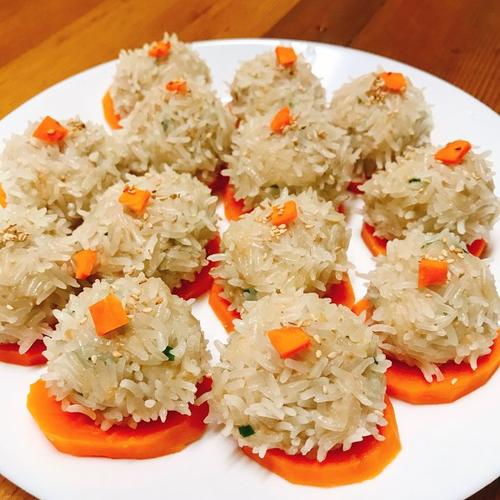
The Lantern Festival is one of the traditional Chinese festivals, which falls on the 15th of the Lunar New Year. On that day, one of the main activities is to see lanterns at night, so the festival is named as Lantern Festival. The Lantern Festival has a long history. This festival originates from the folk custom of turning on lights and praying for blessings. According to some historical records, in the Han Dynasty, the 15th of the Lunar New Year had been designated as the Lantern Festival. The Lantern Festival mainly includes a series of traditional folk activities such as seeing lanterns, guessing riddles written on lanterns, setting off fireworks and eating glutinous rice balls.
As a kind of food, glutinous rice balls have a long history in China. In Song Dynasty, this novel food for Lantern Festival was popular among the Chinese people. Glutinous rice ball is made of glutinous rice flour and various flavors. It is filled with white sugars, roses, sesame, red bean pastes, cinnamon, walnut kernels and nuts, etc. It can be boiled in soup, fried or steamed. Lantern Festival means reunion, symbolizing family's love, harmony and happiness. People also use glutinous rice balls to pin their hopes for future life. Glutinous rice balls contain people's good wishes for life in the coming year.
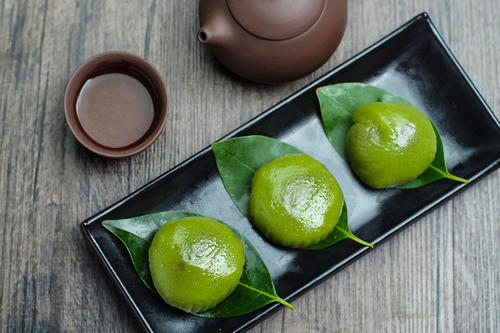
Tomb-Sweeping Day is an ancient festival of the Chinese nation, usually occurring around April 5 of the Gregorian calendar. During this period, spring returns to earth, which was a good time for spring outing and showing respect and miss to dead people in front of their tombs. Therefore, Tomb-Sweeping Day is not only a solemn festival to sweep tombs to worship ancestors, but also a happy festival for people to get close to nature, go for a walk in spring when the grass has just turned green and enjoy spring. In addition, Tomb-Sweeping Day is the day of sacrifice. Offering sacrifices to ancestors is a fine tradition of the Chinese nation, which has existed since ancient times. It is not only conducive to carrying forward filial piety and family affection, but also can promote family members' cohesion and the sense of identity, and can enhance national unity. Tomb-Sweeping Day integrates natural solar terms with humanistic customs, which is a combination of time, place and people. It fully embodies the Chinese ancestors' thought of pursuing the harmony of "heaven, earth and people".
Green rice ball is a traditional snack in the southeast region of China on Tomb-Sweeping Day. According to research, green rice ball appeared in the Tang Dynasty and has a history of more than a thousand years. Glutinous rice flour mixed with wormwood juice, and added with bean paste or lotus seed paste, all of these make green rice ball is neither too sweet nor greasy and it has a light grass fragrance. In ancient times, people made it mainly for sacrifice. Although green rice ball has a history of one thousand years, its shape still stays original. Nowadays its function has faded, and it has become a seasonal snack.

Qixi Festival is a traditional festival in China, and it is "Chinese Valentine's Day". It originated in ancient times, popularized in the Western Han Dynasty, and flourished in the Song Dynasty. Qixi Festival is a love festival for the reason that it is endowed with a beautiful love tale of "the Weaver Girl and Cowherd", who were separated on opposite sides of the milky way, as their marriage was not allowed. It is said that on the 7th day of the 7th month of the Chinese Lunar Calendar, the couple will meet at the Magpie Bridge in the sky. Therefore Qixi Festival is considered as the most romantic traditional festival in China. The traditional custom of this festival is to make a wish, to enjoy the Weaver Girl star and Cowherd star at night, and to pray for marriage.
Fried thin paste is a kind of pastry in Shandong Province, China. It is the food for Qixi Festival, which is prismatic and uniform in thickness. Fried thin paste is golden yellow, crisp and sesame-scented.

The Dragon Boat Festival is one of the four most important traditional Chinese festivals. This Festival, on the 5th day of the 5th month of China lunar calendar, was established during the Warring States period (475-221 BC) and has a history of more than 2,000 years. It used to be a festival to worship ancestors, protect against evil and pray for good fortune. However, it is said that Qu Yuan, a patriotic poet and official of State of Chu in the Warring States period, drowned himself in the Miluo River on the 5th day of the 5th lunar month. From then on, people took that day as a festival to commemorate Qu Yuan. The Dragon Boat Festival has a wide influence in the world, and many other countries and regions in the world also have events to celebrate the festival. Two typical customs of the festival are eating glutinous rice dumplings and racing dragon boats. This festival is a cultural treasure left by Chinese ancestors, which not only clearly records the rich and colorful daily life and cultures of Chinese ancestors, but also contains profound historical and cultural connotations.
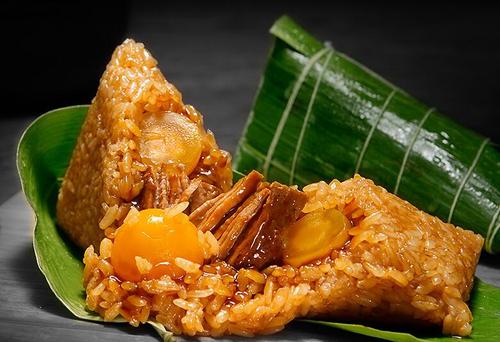
Eating glutinous rice dumplings at the Dragon Boat Festival is a traditional custom in China. Glutinous rice dumplings are stuffed with glutinous rice, jujube, meat and other fillings and wrapped in reed leaves. They have far-reaching influence. For thousands of years, the custom of eating glutinous rice dumplings at the Dragon Boat Festival has been popular in China and other Asian countries such as Korea and Japan. According to some legends, glutinous rice dumplings are invented for Qu Yuan. During the Warring States Period, Qu Yuan was very frustrated because his motherland was invaded. On the 5th day of the 5th lunar month, he drowned himself in the Miluo River with a big stone. He composed a magnificent patriotic ode to show his love to his motherland. After Qu Yuan's death, people threw rice balls into the river to prevent fish and shrimp from spoiling Qu Yuan's body, which became the origin of glutinous rice dumplings.
The Mid-Autumn Festival is a Chinese festival symbolizing family reunion, which falls on the 15th day of the 8th lunar month. On that day, it is said the moon will be the fullest and brightest of the year. Since ancient times, Mid-Autumn Festival has had various events such as offering sacrifices to the moon, seeing the moon, sharing moon cakes and releasing paper lanterns into the evening sky. As for the origin of the Mid-Autumn Festival, the most popular tale is about Chang'e, a fairy who lives on the moon. She meets her husband every year at this festival. The Mid-Autumn Festival was popularized in the Han Dynasty, and it became an officially recognized national festival in the Tang Dynasty. This festival is a colorful and precious cultural heritage.

Moon cakes originated in the Yuan Dynasty. At that time, the people could not bear the cruel rule of the Yuan Dynasty. Therefore, Zhu Yuanzhang, the founding emperor of the Ming Dynasty, led the rebels to prepare for an uprising. However, the officials of the Yuan Dynasty are very strict and it is very difficult to pass on messages. Liu Bowen, his military adviser, came up with a plan. Liu Bowen ordered his subordinates to hide notes--- "August 15th uprising"--- into cakes in order to let other rebels know that they would act on the night of the 15th day of the 8th lunar month. On that day, all the rebels acted together and the uprising succeeded. After that, the custom of eating moon cakes at the Mid-Autumn Festival spread among the people. The shape of the moon cakes is round and people share them with their families, so moon cakes gradually represent family reunion. There are a variety of moon cakes, such as lotus seed paste, salted egg yolk, ice cream moon cakes, red bean paste and five nuts, some of which are highly praised by foreign tourists.

The Double Ninth Festival falls on the ninth day of the ninth lunar month every year. The Double Ninth Festival originated from the ancient people's worship of celestial phenomena and the harvest in autumn. The customs of the festival include climbing, praying for luck and enjoying chrysanthemum flowers. It is a festival for the elderly. This is because Chinese people believe that "nine" is the largest number in the singular, which means good health and a long life and symbolizes people's blessings to the elderly.
Double Ninth cake, named after The Double Ninth Festival, is also called flower cake, chrysanthemum cake or five-color cake. The method of making the cakes is more casual. In Chinese, the word “cake” and the word “tall” have the same pronunciation, so Double Ninth cake means being taller and making progress.
In China, the twelfth lunar month is also called La month, and eight is pronounced as “ba” in Chinese. Because this festival falls on the eighth day of the twelfth lunar month every year, it is called the Laba Festival. This Festival is mainly prevalent in the north of China. It means the Spring Festival is coming(the Spring Festival is from the 1st to 15th of the Lunar New Year).
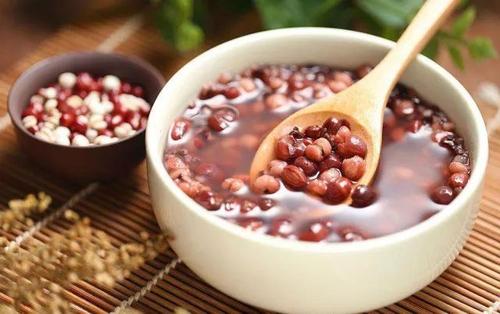
One of the customs of the Laba Festival is to eat Laba porridge. Laba porridge is made of various ingredients, including rice, millet, corn, red dates, lotus seeds, peanuts and various beans. This kind of porridge has been around for over 1000 years. The custom of eating Laba porridge on this Festival originated from Buddhism. The eighth day of the twelfth lunar month is the day when Sakyamuni became a Buddha. In order not to forget the sufferings of Buddha Sakyamuni, ancient Indians ate porridge on this day. After Buddhism was introduced into China, China also began to eat porridge at Laba Festival.
Above are some typical foods of traditional Chinese festivals. Learning these delicacies and the stories behind them is an important way to know Chinese culture. If you are preparing to come to China during these festivals, you might as well try these delicious foods on your own.
